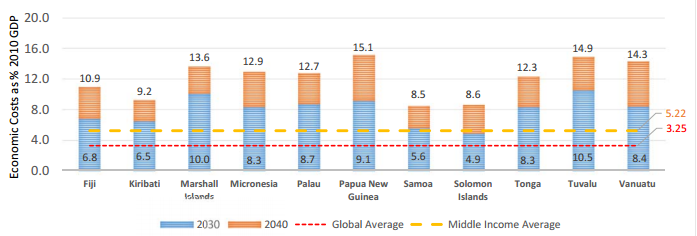Pacific summit aims to turn tide on NCDs
By Camilla Burkot
27 June 2016
In the global health world, non-communicable diseases (NCDs) are often relegated to secondary status behind what are characterised as more ‘glamorous’ and ‘urgent’ epidemics, such as Ebola and Zika. However, last week diabetes, cardiovascular disease, cancer, and other NCDs took centre stage at a high-profile summit in the Tongan capital, Nuku’alofa. The Pacific NCD Summit, jointly convened by the Government of Tonga and the Pacific Community (SPC) on June 20-22, attracted some 120 delegates and high-level representation including Helen Clark, current UNDP chief and prospective UN Secretary General.
In her keynote address, Clark commended Pacific island leaders on the policy steps they have taken so far to tackle NCDs in the region, but also warned that implementation has been uneven and slow. She also highlighted the broad social determinants of the NCD crisis in the Pacific, noting “patterns of trade, consumption, agricultural production, foreign direct investment, and unplanned urbanization” which are reflected in the nutrient-poor diets that are a key risk factor for disease, and pinpointed a lack of coherence across ministries and sectors as one of the major bottlenecks inhibiting regional and global progress on NCDs.
To coincide with the Summit, the World Bank’s Pacific Possible project released a draft* background paper on Health and Non-Communicable Diseases [pdf]. The data and models presented in the paper (co-authored by Devpolicy Associate Ian Anderson) provide details which substantiate the worrying broad trends that Clark outlined. The paper reports that in most Pacific countries NCDs are now the leading cause of death, responsible for upwards of 60 per cent of mortality in at least eight countries (p. 1-2). Moreover, the proportion of people affected by NCDs in the region can be expected to rise over the coming decades, due to a combination of both an increasing and ageing population, and the high level of NCD risk factors, including tobacco use, insufficient physical activity, and unhealthy diet (p. 2-3).
These trends will place Pacific countries’ already tight health budgets under increasing strain, with knock-on opportunity costs for government budgets. In the Marshall Islands, for example, health spending constituted about 12 per cent of GDP, or nearly 25 per cent of government expenditure, in 2013 (p. 8).
In addition to effects on government services, the paper also argues that the high prevalence of NCDs in the Pacific will have long-term economic impacts at the individual, household, and national levels. New modelling presented in the paper shows that the economic costs of the NCD mortality burden in Pacific far exceed global averages (Figure 1 below), with the loss in output caused primarily by the loss of labour due to premature death. Deaths due to NCDs are estimated to shrink the size of the labour force by between 9 and 30 per cent by 2040 across the 11 countries included in the analysis (p. 13).
Figure 1: Economic burden of NCDs as a proportion of GDP, 2030 and 2040

Source: Pacific Possible NCD background paper, Figure 8 (p. 11)
Further modelling shows that morbidity due to NCDs also has a significant economic impact, as affected individuals’ ill-health and diminished productivity leads to additional medical costs, loss of income, and loss of tax revenue (among other costs). Calculations based on diabetes result in an estimated mortality burden of 2.5 to 7.4 per cent of country-specific GDP in 2015, which can be expected to grow to between 4 and 12 per cent by 2040 (p. 15).
Despite its disquieting findings, the paper importantly closes on a positive note, indicating that the prevention of NCDs is possible but will require urgent action from affected countries and their development partners to fully implement existing policy declarations.
To this end, it was encouraging that at the conclusion of the Pacific NCD Summit, the delegates – which included 14 ministers of health of Pacific island countries and territories – produced an outcomes document with 17 key statements, which include a call for a funding mechanism to support NCD responses in the regional, and a commitment to ensure all Pacific countries and territories meet the tobacco taxation target provided in the WHO Framework Convention on Tobacco Control. The key statements will be granted further consideration at the next Pacific Health Ministers meeting in 2017.
*NB comments on the draft Pacific Possible paper on NCDs are invited and may be submitted to PacificPossible@worldbank.org. Comments are requested by 18 July 2016.
About the author/s
Camilla Burkot
Camilla Burkot was a Research Officer at the Development Policy Centre, and Editor of the Devpolicy Blog, from 2015 to 2017. She has a background in social anthropology and holds a Master of Public Health from Columbia University, and has field experience in Eastern and Southern Africa, and PNG. She now works for the Burnet Institute.
